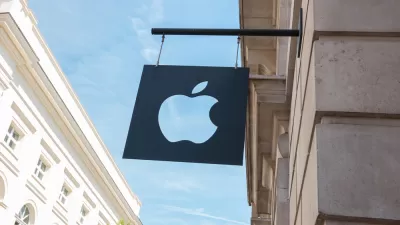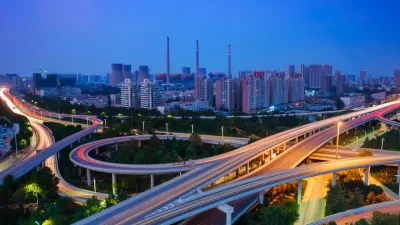Apple's decision to performs most of its engineering and manufacturing overseas, highlights how the US government and the US manufacturing industry can no longer compete internationally. " 'Made in the U.S.A.' is no longer a viable option."
The New York Times offers an in-depth case study chronicling why Apple decided to outsource its manufacturing and much of its engineering operations. "[T]he company's decisions pose broader questions about what corporate America owes Americans as the global and national economies are increasingly intertwined," write authors Charles Duhigg and Keith Bradhser.
"One former [Apple] executive described how the company relied upon a Chinese factory to revamp iPhone manufacturing just weeks before the device was due on shelves. Apple had redesigned the iPhone's screen at the last minute, forcing an assembly line overhaul. New screens began arriving at the plant near midnight. A foreman immediately roused 8,000 workers inside the company's dormitories, according to the executive. Each employee was given a biscuit and a cup of tea, guided to a workstation and within half an hour started a 12-hour shift fitting glass screens into beveled frames. Within 96 hours, the plant was producing over 10,000 iPhones a day. 'The speed and flexibility is breathtaking,' the executive said. 'There's no American plant that can match that.'"
... "[I]n the last two decades, something more fundamental has changed, economists say. Midwage jobs started disappearing. Particularly among Americans without college degrees, today's new jobs are disproportionately in service occupations - at restaurants or call centers, or as hospital attendants or temporary workers - that offer fewer opportunities for reaching the middle class."
A perhaps related broadcast by Ira Glass on NPR's This American Life seemed to presage the recent article. In this show, Mike Daisey, a self-described "worshipper in the cult of Mac" saw photos from a new iPhone, "taken by workers at the factory where it was made. Mike wondered: Who makes all my crap? He traveled to China to find out."
FULL STORY: How U.S. Lost Out on iPhone Work

Alabama: Trump Terminates Settlements for Black Communities Harmed By Raw Sewage
Trump deemed the landmark civil rights agreement “illegal DEI and environmental justice policy.”

Study: Maui’s Plan to Convert Vacation Rentals to Long-Term Housing Could Cause Nearly $1 Billion Economic Loss
The plan would reduce visitor accommodation by 25% resulting in 1,900 jobs lost.

Planetizen Federal Action Tracker
A weekly monitor of how Trump’s orders and actions are impacting planners and planning in America.

Paris Bike Boom Leads to Steep Drop in Air Pollution
The French city’s air quality has improved dramatically in the past 20 years, coinciding with a growth in cycling.

Why Housing Costs More to Build in California Than in Texas
Hard costs like labor and materials combined with ‘soft’ costs such as permitting make building in the San Francisco Bay Area almost three times as costly as in Texas cities.

San Diego County Sees a Rise in Urban Coyotes
San Diego County experiences a rise in urban coyotes, as sightings become prevalent throughout its urban neighbourhoods and surrounding areas.
Urban Design for Planners 1: Software Tools
This six-course series explores essential urban design concepts using open source software and equips planners with the tools they need to participate fully in the urban design process.
Planning for Universal Design
Learn the tools for implementing Universal Design in planning regulations.
Smith Gee Studio
Alamo Area Metropolitan Planning Organization
City of Santa Clarita
Institute for Housing and Urban Development Studies (IHS)
City of Grandview
Harvard GSD Executive Education
Toledo-Lucas County Plan Commissions
Salt Lake City
NYU Wagner Graduate School of Public Service




























